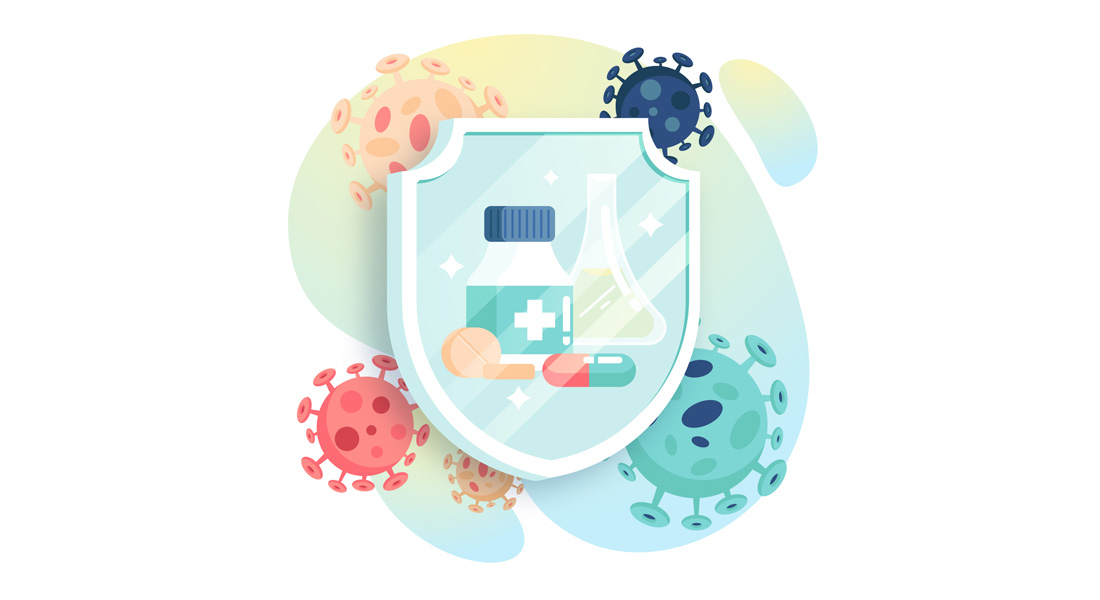Definition of Immunity
Immunity refers to the resistance acquired by a host against injury caused by microorganisms and their products. It provides protection against infectious diseases and involves the body's reaction to foreign antigens.
Types of Immunity
1. Innate Immunity
-
Definition: Resistance to infection that is present from birth due to genetic and constitutional makeup. It is not influenced by prior exposure to microorganisms or immunization.
-
Characteristics:
Immediate response.
Non-specific defense.
No memory of previous infections.
Subtypes of Innate Immunity
-
Species Immunity: Resistance common to all members of a species (e.g., humans are resistant to Bacillus anthracis, which infects chickens).
-
Racial Immunity: Differences in susceptibility among races (e.g., genetic resistance to Plasmodium falciparum malaria in African populations).
-
Individual Immunity: Variations in immunity among individuals of the same species (e.g., homozygous twins show similar resistance to tuberculosis).
Factors Influencing Innate Immunity
Age: Immature immune system in fetuses; waning immunity in old age.
Hormonal Factors: Conditions like diabetes and adrenal dysfunction increase susceptibility.
Nutrition: Malnutrition weakens both humoral and cell-mediated immune responses.
Mechanisms of Innate Immunity
-
Epithelial Barriers:
Skin acts as a mechanical barrier and secretes bactericidal substances.
Mucosal surfaces trap pathogens (e.g., respiratory tract cilia propel particles out).
Gastric acid destroys bacteria in the stomach.
Antibacterial Substances:
-
Proteins like lysozyme, complement, and interferons destroy pathogens.
-
Cellular Factors:
-
Phagocytes (e.g., neutrophils and macrophages) engulf and destroy pathogens through chemotaxis, attachment, ingestion, and intracellular killing.
-
-
Inflammation:
-
A nonspecific response to tissue injury that involves vasodilation, increased vascular permeability, and phagocytosis.
-
-
Fever:
-
Elevated body temperature inhibits pathogen growth and stimulates interferon production.
-
-
Acute Phase Proteins:
-
Proteins like C-reactive protein (CRP) activate the complement system to prevent tissue injury.
-
2. Adaptive Immunity
-
Definition: A specific immune response that develops after exposure to antigens; it has memory, providing long-term protection.
-
Characteristics:
Slower onset compared to innate immunity.
Highly specific to the antigen.
Involves immunological memory.
Types of Adaptive Immunity
-
Active Immunity:
-
Induced by infection or vaccination.
-
Long-lasting protection.
-
Examples:
-
Naturally Acquired: Infection with a live pathogen.
-
Artificially Acquired: Vaccination (e.g., BCG vaccine for tuberculosis).
-
-
-
Passive Immunity:
-
Provided by ready-made antibodies.
-
Short-term protection.
-
Examples:
-
Naturally Acquired: Antibodies passed from mother to fetus via placenta.
-
Artificially Acquired: Injection of antibodies (e.g., gamma globulin).
-
-
Mechanisms of Adaptive Immunity
-
Humoral Immunity:
Mediated by antibodies produced by B cells.
Neutralizes toxins, lyses antigens, or facilitates phagocytosis.
-
Cell-Mediated Immunity:
Mediated by T lymphocytes.
Effective against chronic bacterial infections and intracellular pathogens like viruses.
Antigens
-
Molecules that induce an immune response in the body.
-
Types:
-
Exogenous Antigens: Enter from outside the body (e.g., inhalation or injection).
-
Endogenous Antigens: Generated within cells due to infection or metabolism.
-
Autoantigens: Normal proteins targeted in autoimmune diseases.
-
Key Terms
-
Immunogen: A substance capable of inducing an immune response.
-
Hapten: A small molecule that elicits an immune response only when attached to a larger carrier molecule.
-
Epitope: The specific part of an antigen recognized by an antibody.
Antibodies (Immunoglobulins)
-
Glycoproteins produced by plasma cells in response to antigens.
-
Structure:
-
Composed of four polypeptide chains (two heavy and two light chains).
-
Variable regions bind specifically to antigens.
-
Constant regions determine antibody function.
-
Types of Antibodies
| Class | Function | Location |
|---|---|---|
| IgG | Most abundant; crosses placenta; opsonization | Blood, plasma |
| IgA | Localized defense in mucosal secretions | Saliva, tears, milk |
| IgM | First antibody produced during infection | Blood |
| IgE | Involved in allergic reactions | Tissues |
| IgD | Antigen recognition by B cells | Surface of immature B cells |
Key Differences Between Active and Passive Immunity
| Feature | Active Immunity | Passive Immunity |
|---|---|---|
| Induction | By infection or vaccination | By ready-made antibodies |
| Duration | Long-lasting | Short-lived |
| Onset | Delayed | Immediate |
| Memory | Present | Absent |
| Use | Prophylaxis | Treatment of acute infections |



Free Videos